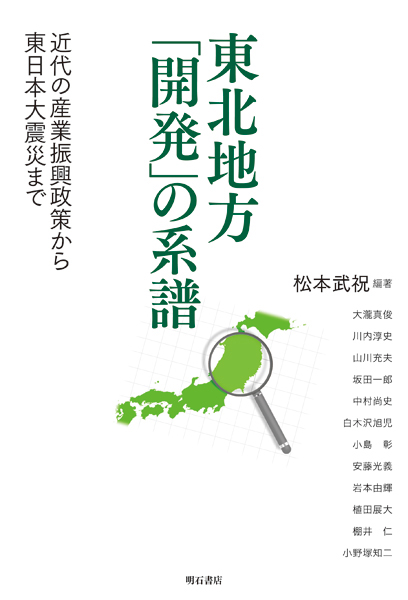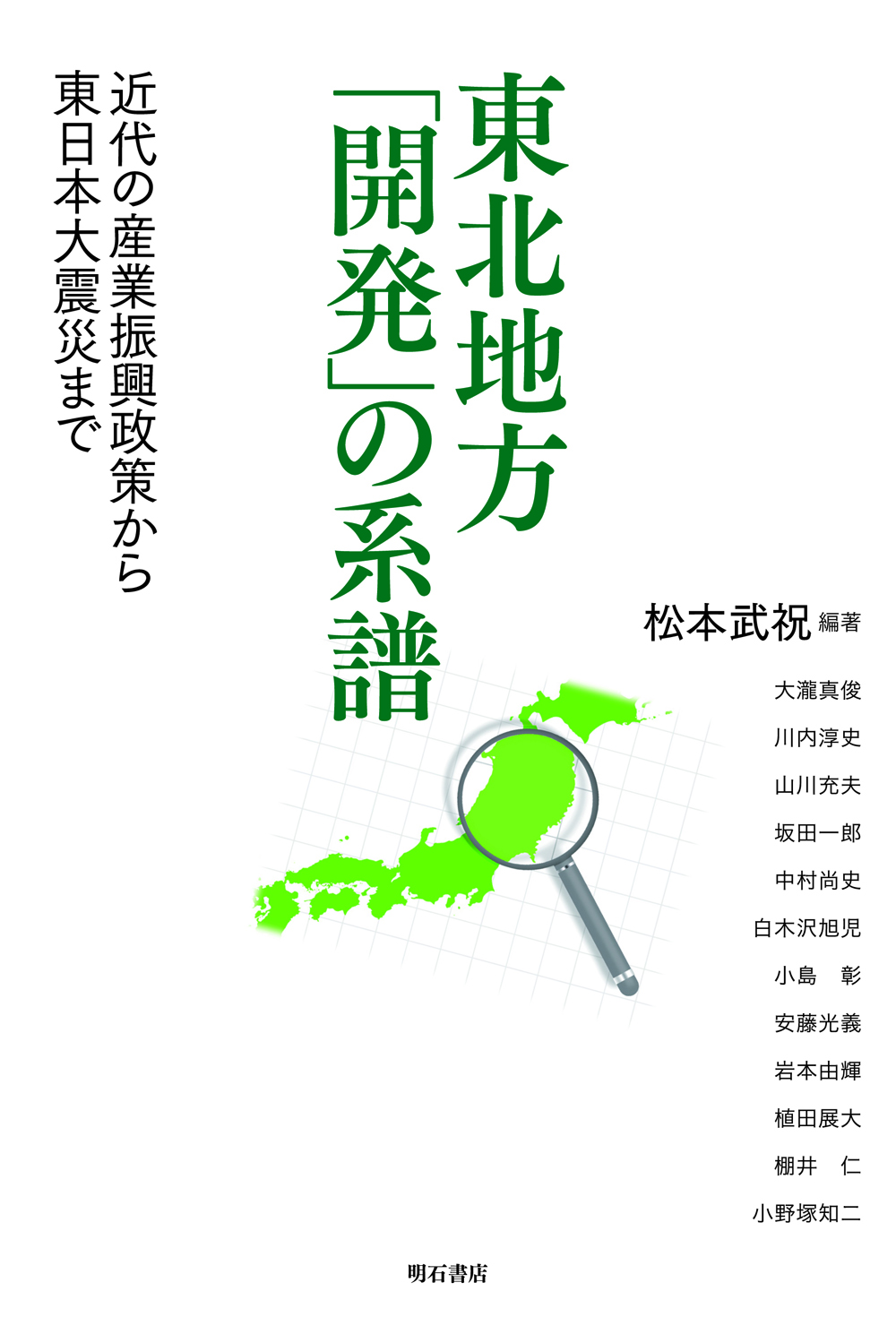
Title
Tohoku-chiho kaihatsu no keifu (Genealogy of Tohoku Regional “Development” - From modern industrial stimulation policies to the Great East Japan Earthquake)
Size
284 pages, 127x188mm
Language
Japanese
Released
March 11, 2015
ISBN
9784750341477
Published by
Akashi Shoten
Book Info
See Book Availability at Library
Japanese Page
The Great East Japan Earthquake of 2011 was a clear reminder of Tohoku’s regional function as a supplier of natural resources (such as electric power and food) and labor to the greater Tokyo metropolitan area. Tohoku’s role has been formed by its history. Throughout the original accumulation period of Japanese capitalism, Tohoku was restructured as an agricultural zone, positioning it as the source of food and labor that supplied metropolitan Tokyo and its industrial zone. The advance of industrialization resulted in a deterioration of agricultural trade conditions along with the relative stagnation of the economy of Tohoku. Later, the historical processes that occurred during the accumulation period was forgotten, and the image of Tohoku as a merely backward region was firmly established. This image has also governed the self-consciousness of the region’s people.
The image of Tohoku as backward defined it as the object of economic development policy. At the end of the nineteenth century, the term “Tohoku Promotion” appeared as a slogan used by the central government and financial world; after World War II, the term was handed down and transformed in the policy challenge titled “Tohoku Development.” “Tohoku Promotion” and “Tohoku Development” were intended to attract industries and develop electric power and other resources. “Development” can be defined as a unique key word that emphasizes the relationship between Tohoku and the urban center (Metropolitan Tokyo region). Thus, this book is focused on the history of Tohoku “Development.”
Meanwhile, the Great East Japan Earthquake impacted production processes undertaken by the manufacturing industry on a global scale. It resulted in widespread recognition of the indispensable role fulfilled by the manufacturing industry as a production base in global supply chains. Furthermore, while the delayed reconstruction of agricultural facilities, fisheries, and traditional local industries was ignored, these industrial bases were restored rapidly to normalize the global supply chains.
Based on the unique characteristics of the Tohoku economy, which were revealed by this disastrous earthquake, this book attempts to grasp the history of Tohoku’s “development” by focusing on international triggers in addition to its relationship with the Metropolitan Tokyo region. Regarding international triggers, the book particularly focuses on relationships with nearby East Asia. Before and during the war, Tohoku played a role as a logistics base (region supplying military horses, troops, and agricultural migrants) in support of the invasion of East Asia driven by Japanese imperialism. After the war, Tohoku supplied resources (electric power) and labor to the Tokyo Metropolitan region and accepted companies located in the region that sought low-wage labor. As a result of this process, during and since the period of rapid economic growth, Tohoku has been embedded as an indispensable part of the international division of manufacturing industries built on the East Asian scale—Japan, Taiwan, South Korea, and after some time, China—gradually becoming competitive with Taiwan, South Korea, and China, thereby supporting the accumulation of capital.
This book was compiled using reports and discussions from the 2013 Spring Conference of the Political Economy and Economic History Society (Themes: Genealogy of Tohoku Region “Development”—Focused on International Triggers).
(Written by MATSUMOTO Takenori, Professor, Graduate School of Agricultural and Life Sciences / 2019)



 Find a book
Find a book


